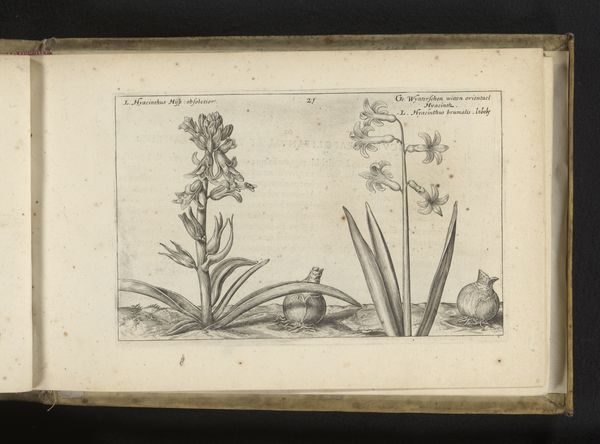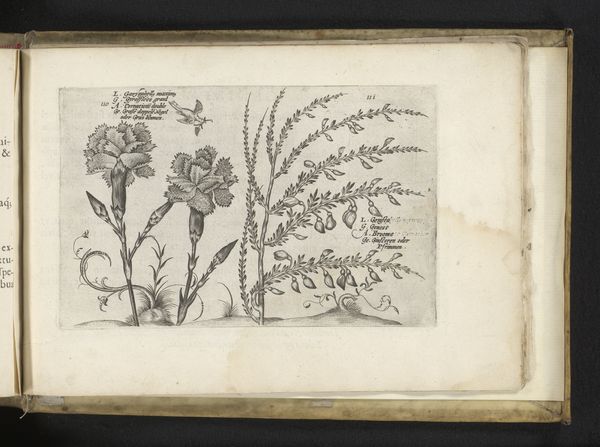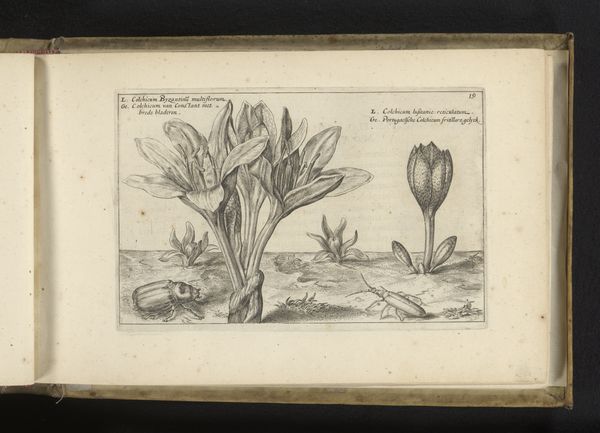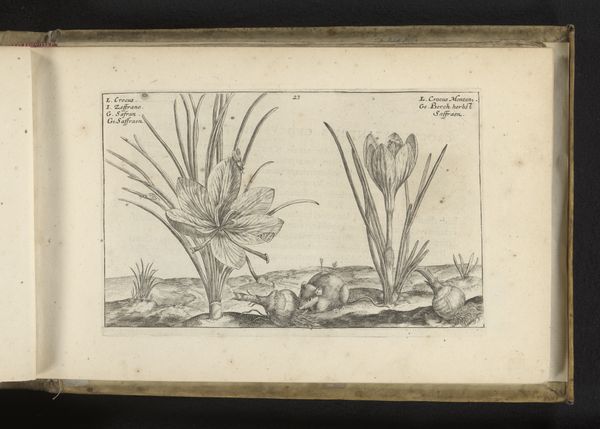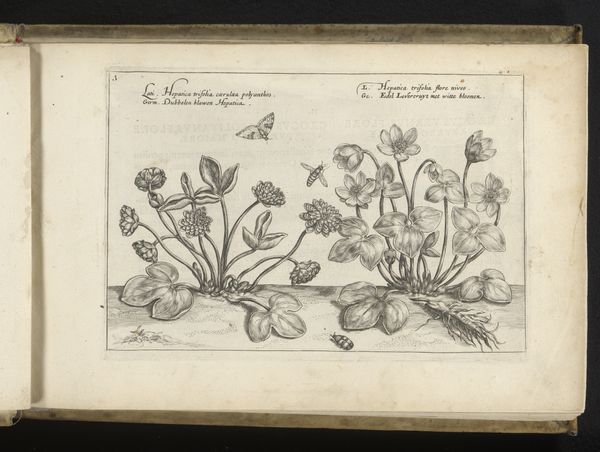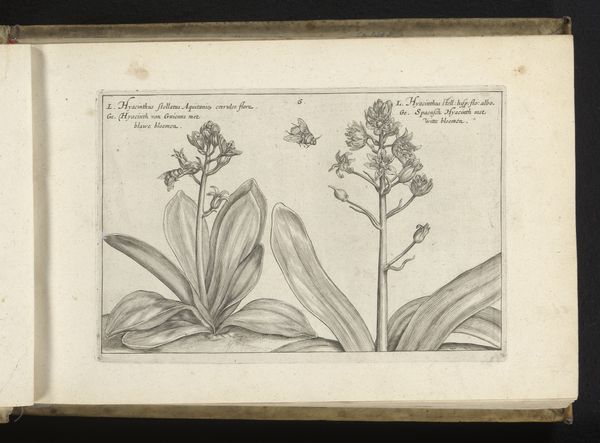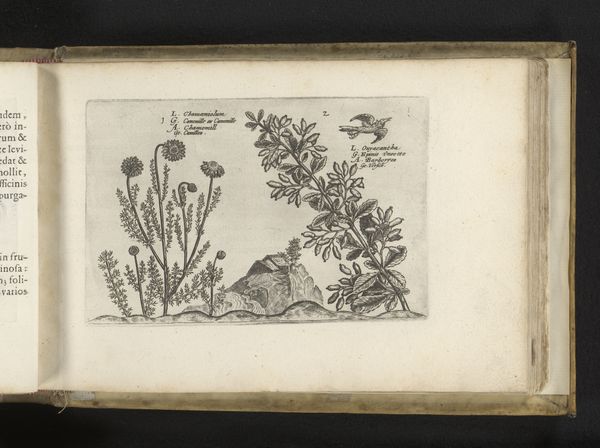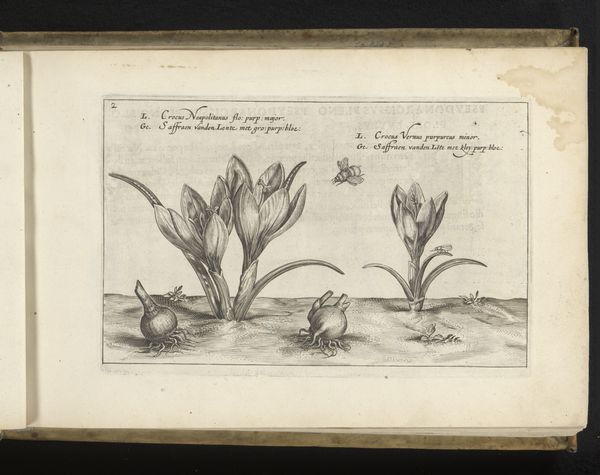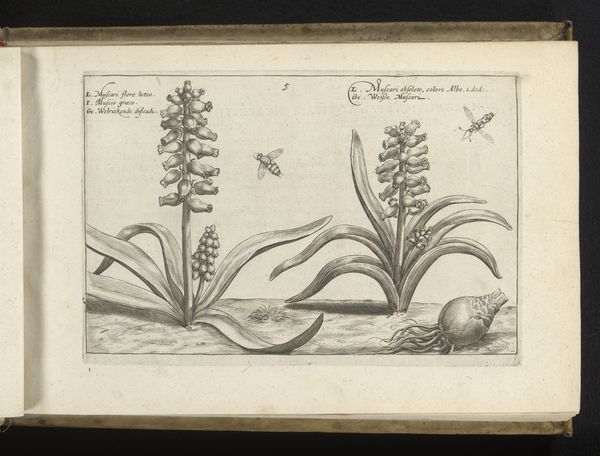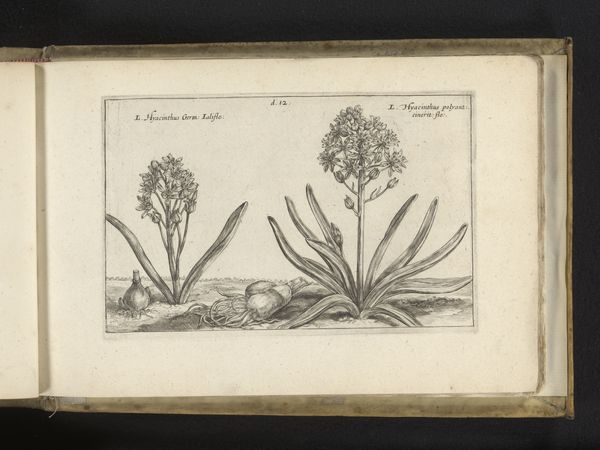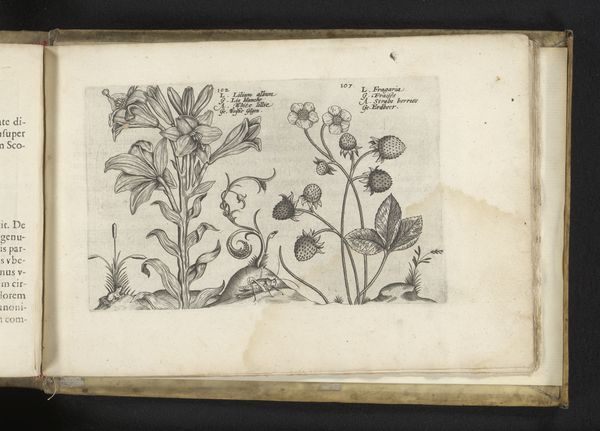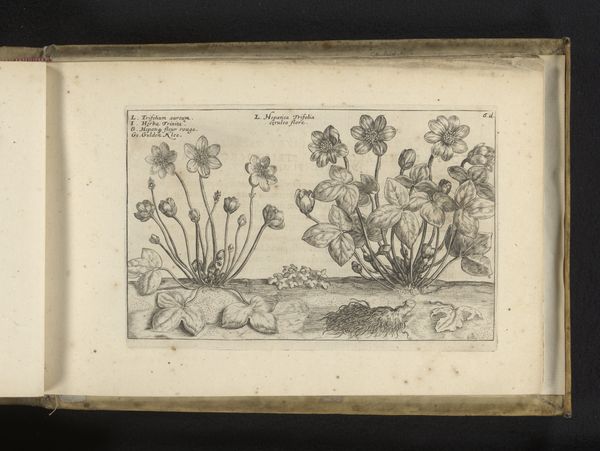
#
aged paper
#
sketch book
#
flower
#
personal sketchbook
#
sketchwork
#
pen-ink sketch
#
pen and pencil
#
pen work
#
sketchbook drawing
#
storyboard and sketchbook work
#
sketchbook art
Dimensions: height 138 mm, width 207 mm
Copyright: Rijks Museum: Open Domain
Curator: This exquisite pen and ink drawing, "Twee variëteiten van Scilla autumnalis," was completed in 1617 by Crispijn van de Passe (II). It's currently held in the collection of the Rijksmuseum. Editor: There's a stark, almost austere quality to this botanical study. The monochrome palette really highlights the precision of the line work and the delicate forms of the Scilla plants. Curator: Absolutely. The drawing encapsulates the burgeoning interest in botany and naturalism of the time. These illustrated manuscripts served an important scientific purpose, documenting species. Looking at it now through an intersectional lens, what strikes me is how access to knowledge, even botanical knowledge, was stratified. These works, intended for study, also served to reinforce a specific worldview of nature's order and hierarchy. Editor: I agree, there's also an element of labor and access at play. Van de Passe had the materials, the skills, and crucially, the commission or patronage, to produce something so meticulously observed. The texture of the paper itself tells a story of production and value. I imagine the ink had to be mixed, quills prepared. It really centers the social dimensions involved in art production. Curator: We might also reflect on the ways in which these kinds of images influenced and continue to influence perceptions of the natural world, and in what ways those perceptions relate to the era of exploration and resource extraction from colonized lands. There's a certain act of ‘knowing’ present within them. Editor: Right, thinking about that contemporary moment we cannot forget how the artist transforms organic material into commodity—an item ready for market, scholarly display, collecting, binding. It speaks to an age of intense commodification as much as of scientific observation. Curator: I find myself reflecting on how images, whether celebrated artworks or quotidian illustrations, can subtly weave particular ideas and ideologies into the very fabric of our understanding. Editor: And I am thinking how such close, manual work reveals larger social economies related to art making.
Comments
No comments
Be the first to comment and join the conversation on the ultimate creative platform.

